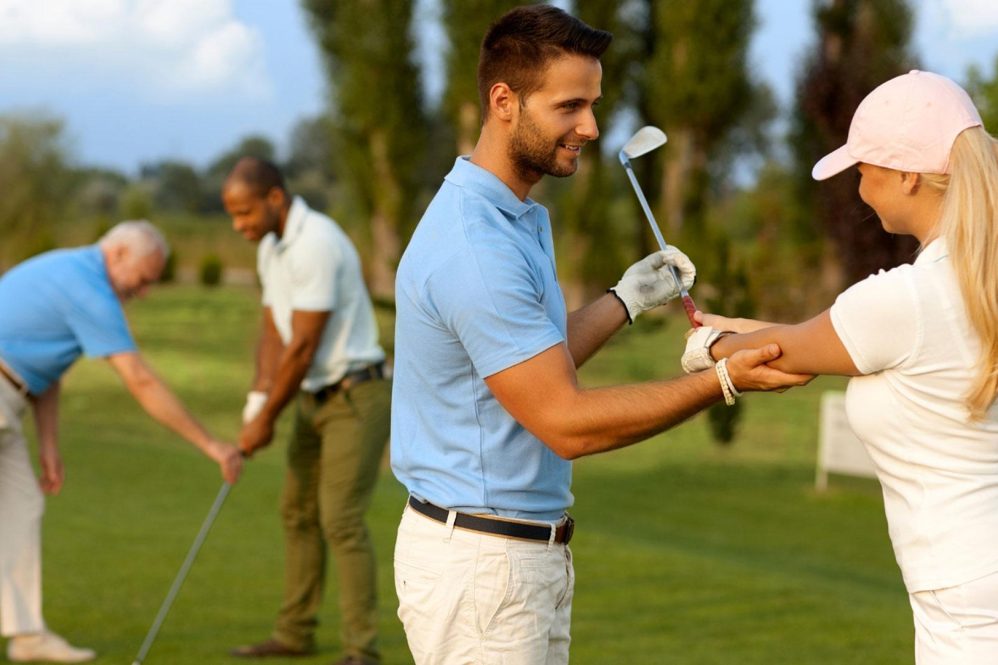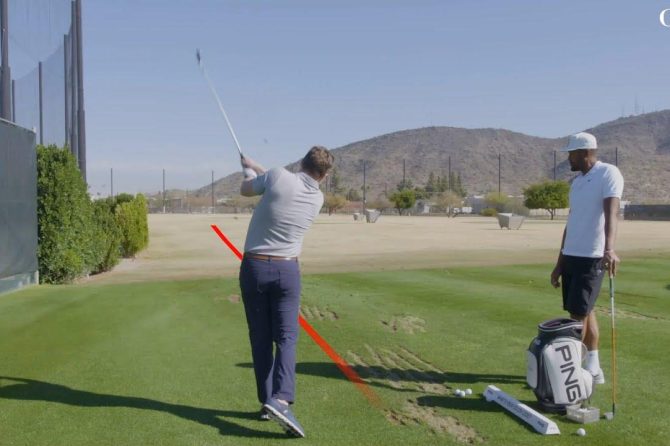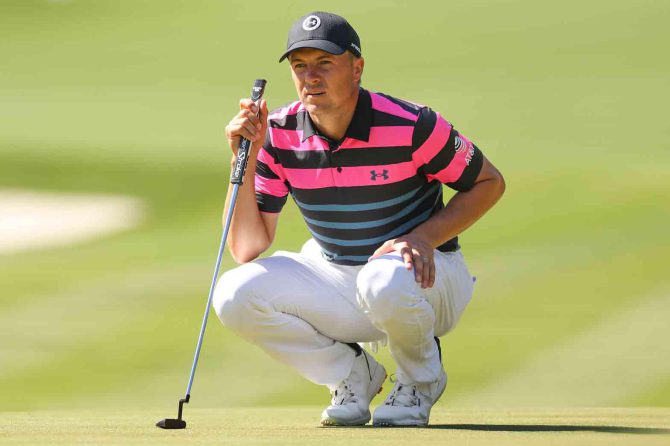The pursuit of athletic excellence in golf necessitates a meticulous approach that harmonizes physical fitness with the technical nuances of the game. By embracing an academic framework, golfers can embark on an evidence-based journey towards optimizing their performance. This scholarly perspective provides a comprehensive understanding of the biomechanics and physiology underlying golf, enabling golfers to harness their physical potential and transcend established boundaries.
Biomechanical Analysis for Optimized Swing Dynamics
Understanding and optimizing the biomechanics of your golf swing is pivotal for unlocking optimal performance while reducing the likelihood of injuries. This section delves into the intricacies of swing dynamics, employing a scientific approach to enhance your technique and maximize your results on the course.
Evaluating Key Parameters: Velocity, Power, and Timing
Key parameters such as clubhead speed, power, and timing play a crucial role in determining the эффективности of your swing. Advanced biomechanical analysis techniques can accurately measure these metrics, providing valuable insights into areas for improvement. This data-driven approach empowers you to identify swing mechanics that maximize clubhead speed, generate greater power, and achieve optimal timing, culminating in enhanced ball striking and increased distance.
Muscular Activation and Coordination: A Symphony of Motion
The golf swing is a complex symphony of muscle activation coordinated throughout the body. Biomechanical analysis can reveal the subtle interplay of various muscle groups, uncovering any imbalances or weaknesses that may hinder swing dynamics. By addressing these muscular inefficiencies through targeted exercises and training protocols, you can unlock improved stability, power, and control throughout the swing, leading to greater consistency and precision.
| Muscle Group | Role in Swing | Common Imbalances |
|—|—|—|
| Core | Provides stability and power | Weakness can lead to inconsistencies in backswing and downswing |
| Glutes | Generates power in the downswing | Weakness can result in loss of distance and accuracy |
| Hamstrings | Assists in hip rotation | Tightness can restrict downswing speed and power |
| Quadriceps | Supports knee extension and hip stability | Weakness can contribute to balance issues and reduced power |
| Shoulders | Facilitates clubhead speed and control | Imbalances can impact swing path and accuracy |
Physiological Adaptations for Enhanced Endurance and Power
Understanding the physiological adaptations that occur in the body during golf-specific training is crucial for optimizing performance. These adaptations enhance endurance and power, allowing golfers to sustain peak performance throughout the round.
Endurance Adaptations:
- Increased Mitochondrial Density: Training stimulates the proliferation of mitochondria, the energy-producing organelles in muscle cells. This increases the body’s capacity to generate ATP, the fuel for muscular contraction.
- Improved Capillary Network: Exercise promotes the formation of new capillaries, increasing blood flow to muscles. This enhances the delivery of oxygen and nutrients, supporting endurance performance.
- Enhanced Buffering Capacity: Regular golf practice improves the muscle’s ability to buffer lactate, a byproduct of anaerobic metabolism. This reduces muscle fatigue and allows for prolonged effort.
Power Adaptations:
- Fast-Twitch Fiber Recruitment: Golf-specific movements involve rapid acceleration and deceleration. Training recruits fast-twitch muscle fibers, which generate more power and speed.
- Improved Neuromuscular Coordination: Optimized movement patterns are linked to increased power output. Training focuses on refining muscle coordination and reducing energy loss through inefficient mechanics.
- Increased Muscle Mass: Resistance training stimulates muscle growth, which enhances the body’s capacity to generate force and power.
Injury Prevention and Recovery Protocols
Understanding the biomechanics and physiology of the golf swing is crucial for injury prevention. Proper warm-up and stretching routines, along with correct technique, reduce the risk of acute and chronic injuries. Implementing strength and conditioning programs tailored to golf-specific movements further enhances muscle balance and joint stability, safeguarding against future ailments. Additionally, regular assessments by qualified professionals can identify potential musculoskeletal imbalances or weaknesses, enabling early intervention and preventive measures.
In the event of an injury, a comprehensive recovery protocol is essential for a safe and effective return to the game. Rest, rehabilitation exercises, and gradual return-to-play programs are cornerstone elements of any recovery plan. Collaborating with healthcare professionals, such as physical therapists and sports medicine specialists, ensures evidence-based treatment, optimizes healing, and minimizes the likelihood of re-injury.
Injury Prevention and Recovery Table
| Injury | Prevention Measures | Recovery Protocol |
|—|—|—|
| Low back pain | Strong core muscles, proper swing mechanics | Rest, ice, physical therapy, gradual return-to-play |
| Wrist pain | Wrist strengthening exercises, proper grip | RICE principle, immobilization, range-of-motion exercises |
| Shoulder pain | Rotator cuff strengthening, correct swing plane | Physical therapy, anti-inflammatory medication, corticosteroid injections |
| Knee pain | Quadriceps strengthening, knee bracing | Rest, elevation, cold therapy, progressive rehabilitation |
Nutrition and Supplementation for Optimal Performance
Nourishment plays a pivotal role in fueling athletic endeavors, and golf is no exception. A well-balanced diet provides the vital nutrients that sustain endurance, enhance focus, and promote recovery. For aspiring golfers, optimizing nutrition entails understanding individual needs and tailoring dietary choices accordingly. This requires collaboration between players and qualified nutritionists to develop personalized plans.
Essential macronutrients, encompassing carbohydrates, fats, and proteins, provide the body with energy, support cellular function, and aid recovery. Complex carbohydrates, such as those found in whole grains, legumes, and fruits, release energy gradually, sustaining performance throughout long rounds. Healthy fats, sourced from oily fish, avocados, and nuts, support brain function, joint health, and hormone production. Lean proteins, derived from poultry, fish, and plant-based sources, promote muscle repair and growth.
Supplements can complement a balanced diet by addressing specific nutritional needs. Creatine, a natural substance found in meat and seafood, enhances muscle power and endurance. Electrolyte drinks, especially during hot and humid conditions, replenish lost fluids and electrolytes, preventing dehydration and its associated decline in performance. Multivitamins and minerals, tailored to individual requirements, can fill nutritional gaps and support overall well-being. It is crucial to consult with healthcare professionals before incorporating supplements into a regimen.
* Cognitive and Behavioral Strategies for Improved Focus and Control
Cognitive Strategies for Precision Swing Execution:
- Visual Imagery: Incorporate visualization techniques to envision successful shots and guide physical movements. By mentally rehearsing scenarios, golfers enhance muscle memory and boost confidence.
- Focus Training: Implement attention-control exercises to minimize distractions and maintain focus during the swing. This involves practicing shot execution under challenging conditions to develop adaptability and concentration.
- Pre-shot Routine Optimization: Establish a consistent pre-shot routine to calm nerves, clear the mind, and cue the body for optimal performance. Include elements such as controlled breathing, swing visualization, and target alignment.
Behavioral Strategies for Emotional Management:
- Self-Talk and Positive Reinforcement: Engage in positive self-talk to reduce anxiety and foster confidence during competition. Celebrate successes, learn from mistakes, and focus on process-oriented goals to maintain motivation and reduce pressure.
- Stress Management Techniques: Incorporate relaxation techniques such as deep breathing, meditation, or mindfulness into practice sessions to control anxiety and improve shot execution under pressure.
- Emotional Intelligence Development: Cultivate self-awareness by identifying and managing emotional triggers on and off the course. This enables golfers to respond appropriately to challenging situations, make objective decisions, and maintain composure throughout the game.
the adoption of an academic framework in optimizing golf performance provides a transformative pathway towards surpassing limitations and achieving unparalleled success on the green. Through the rigorous application of scientific principles and evidence-based methodologies, golfers can unlock the transformative power of academia to attain peak performance, cementing their place among the elite ranks of the sport.





